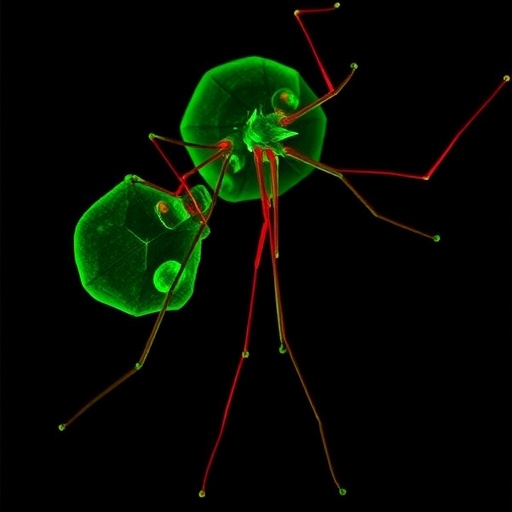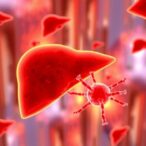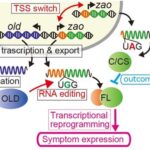
In a groundbreaking advancement in malaria research, a team led by Rawat, Antil, Meenakshi, and colleagues has unraveled the intricate molecular mechanisms governing the life cycle transitions of Plasmodium falciparum, the parasite responsible for the deadliest form of human malaria. Their study, recently published in Nature Communications, sheds light on the critical role of the PfPPM2 signalling pathway in regulating both the asexual replication and sexual differentiation of the parasite, processes that are vital for malaria transmission and pathogenesis.
Malaria remains a formidable global health burden, causing hundreds of thousands of deaths annually, predominantly in sub-Saharan Africa. The parasite Plasmodium falciparum exhibits a complex life cycle alternating between human hosts and mosquito vectors, with distinct developmental stages. During the intraerythrocytic phase in humans, P. falciparum undergoes repeated rounds of asexual division, exponentially increasing parasite biomass. Additionally, a subset of the parasite population commits to sexual differentiation, forming gametocytes, which are essential for transmission to Anopheles mosquitoes. Understanding the molecular cues that coordinate these transitions has been a long-standing challenge in malaria research.
According to the study, PfPPM2, a protein phosphatase of the PPM family, emerges as a pivotal regulatory node orchestrating these divergent cellular fates. Protein phosphatases are enzymes that remove phosphate groups from target proteins, thereby modulating their activity and downstream signalling. By deploying advanced genetic manipulation techniques and phosphoproteomic analyses, the researchers dissected the functional involvement of PfPPM2 in parasite development.
Their experiments revealed that inhibition or conditional deletion of PfPPM2 significantly disrupts the parasite’s ability to undergo successive asexual replication cycles within red blood cells. This impairment reduces parasitemia and hinders the parasite’s capacity for rapid expansion, which is critical for disease progression in infected individuals. Remarkably, the loss of PfPPM2 function also perturbs the intricate signalling cascade that triggers sexual commitment, resulting in defective gametocyte formation. This dual role positions PfPPM2 as a master regulator, fine-tuning the balance between proliferation and transmission stages.
The elucidation of PfPPM2’s role offers exciting possibilities for therapeutic intervention. Current antimalarial strategies largely target the asexual stages, responsible for clinical symptoms. However, these approaches do not effectively block gametocyte development and subsequent transmission to mosquitoes, perpetuating the disease cycle. Targeting PfPPM2 may provide a dual-action mechanism: curtailing parasite growth within the host while simultaneously blocking the sexual stages needed for spread, a crucial step toward malaria elimination.
Furthermore, the study delves into the molecular network regulating PfPPM2 activity. The authors identified specific phosphorylation sites on downstream effectors modulated by PfPPM2, delineating a previously uncharacterized signalling axis. This includes modulation of transcription factors and cell cycle regulators that govern DNA replication and cellular differentiation. The dynamic phosphorylation status controlled by PfPPM2 appears to serve as a molecular switch dictating cell fate decisions in response to environmental and metabolic cues.
Technologically, the research utilizes cutting-edge genome editing tools, notably CRISPR-Cas9 mediated gene editing, to generate conditional knockdown and knockout strains of P. falciparum. Coupled with phosphoproteomic profiling via mass spectrometry, this enabled comprehensive mapping of protein targets affected by PfPPM2. Live-cell imaging further demonstrated the phenotypic consequences at different parasite stages, providing direct visual evidence of developmental arrest and aberrant sexual differentiation under compromised PfPPM2 function.
The implications extend beyond fundamental biology. Understanding the signalling intricacies of malaria parasite development opens doors to novel drug discovery pipelines. Small molecule inhibitors selectively targeting PfPPM2 or its regulatory partners could offer next-generation antimalarials with transmission-blocking potential. Such agents would disrupt the malaria lifecycle at multiple critical junctures, thwarting parasite propagation and spread simultaneously.
Moreover, the findings contribute vital knowledge to the broader field of parasite cell biology. Protein phosphorylation as a reversible post-translational modification governs myriad cellular processes across eukaryotes; dissecting its role in malaria parasites illuminates conserved and divergent signalling paradigms. Insights gained here may also inform studies in related apicomplexan parasites, many of which cause significant human and veterinary diseases.
This research addresses a crucial gap in malaria biology: deciphering how parasites integrate internal and external signals to decide between survival-focused proliferation and the generation of transmission-competent forms. By decoding the PfPPM2 signalling pathway, Rawat and colleagues offer a molecular framework to understand how malaria parasites navigate this life cycle crossroads with exquisite precision.
From a global health perspective, innovations arising from this work align with international malaria control and eradication goals. Interrupting transmission by attacking gametocytes is a recognized strategy to break the infection cycle. The identification of PfPPM2 as a linchpin in gametocyte development heralds promising avenues to achieve durable reductions in malaria incidence and mortality.
Intriguingly, the study also hints at potential interactions between PfPPM2-mediated signalling and parasite metabolic states. Given malaria parasites’ reliance on host-derived nutrients and environmental signals, it is conceivable that PfPPM2 integrates metabolic cues to optimize timing of developmental transitions. Future research may elucidate these connections, further enriching our understanding of parasite adaptation mechanisms.
The detailed mechanistic insights offered by this study underscore the power of integrative molecular parasitology, combining genetics, proteomics, and cell biology to illuminate pathogen biology. Such multidisciplinary approaches are essential to tackle the complexity of malaria pathogenesis and to translate laboratory findings into clinical solutions.
In summary, the characterization of PfPPM2 as a central regulator of both asexual division and sexual conversion in Plasmodium falciparum represents a milestone in malaria research. This discovery not only deepens understanding of parasite development but also lays the groundwork for innovative therapeutic and transmission-blocking strategies. With malaria continuing to pose a global threat, advances like these energize efforts toward a malaria-free world.
As researchers build on these findings, exploring the full spectrum of PfPPM2’s regulatory network and its pharmacological vulnerabilities, the prospect of novel antimalarials that simultaneously suppress disease and transmission appears increasingly within reach. The journey from bench to bedside for targeting PfPPM2 promises to reshape the landscape of malaria control in the years to come.
Subject of Research: Regulation of asexual replication and sexual differentiation in Plasmodium falciparum by PfPPM2 signalling.
Article Title: PfPPM2 signalling regulates asexual division and sexual conversion of human malaria parasite Plasmodium falciparum.
Article References:
Rawat, A., Antil, N., Meenakshi et al. PfPPM2 signalling regulates asexual division and sexual conversion of human malaria parasite Plasmodium falciparum. Nat Commun 16, 4790 (2025). https://doi.org/10.1038/s41467-025-59476-w
Image Credits: AI Generated
Tags: asexual replication of malariacritical roles in malaria pathogenesisgametocyte development in malariaintraerythrocytic phase of Plasmodiummalaria global health burdenmalaria transmission mechanismsmolecular mechanisms in malariamosquito vector transmissionPfPPM2 malaria researchPlasmodium falciparum life cycleprotein phosphatases in malariasexual differentiation in parasites



